Codex Lerma
A Spanish musical treasure with scrawls
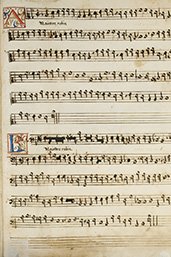
The Utrecht University Special Collections houses a manuscript that is rather different in several respects. It is big, broken and fragile, with musical notations in careless script. The Codex Lerma looks a mess, but as is often the case with manuscripts: things don’t always look as they seem.
A first impression
The Codex Lerma was written in Spain around 1600. Its size is especially striking: 55 x 41,5 centimetres. The 165 leaves are held together by a modern binding, and more than twenty leaves have disappeared over time. That is nothing strange for a manuscript of over 400 years old of which the paper is brittle and affected by ink corrosion. Many leaves have been restored. In several sections compositions have been scribbled down, and there are no luxurious illustrations to be found. Through sheer luck and coincidence this simple manuscript has survived, and is now a unique witness to the way music was practiced in Spain during the Renaissance.
From Lerma to Utrecht
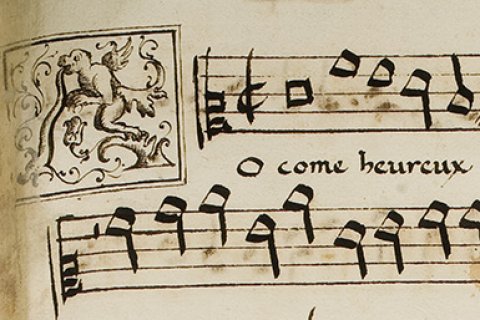
Lerma is a small town on the road from Madrid to Santander. In the 1950s it was visited by Maarten Albert Vente, in those days a lecturer at the Utrecht Institute for Musicology. In the sacristy of the San Pedro collegiate church of Lerma, he saw an old tattered manuscript lying around, for which the caretaker of the church obviously did not have much use. Vente offered to buy it, to save it from further deterioration. After its arrival in Utrecht it was described by Willem Elders in 1967 in an article for the Tijdschrift van de Vereniging voor Nederlandse Muziekgeschiedenis (‘Journal of the Association for Dutch Music History’). It turned out that the manuscript contained a number of unique compositions. Of their history not much was known yet. This changed in the middle of the 1990s after Douglas Kirk had researched the Codex Lerma and a closely related manuscript from Lerma. In 2008 the manuscript was digitised by the university library and submitted to a new research of which the results were published in a PDF on the internet.
International and local polyphony
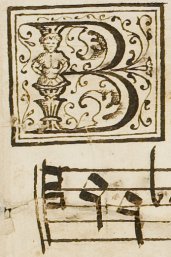
On the basis of all considerations it can be reconstructed that in the early 1590s one or two persons started copying the compositions from the Frankish-Flemish (or Dutch) School. It concerned compositions by Johannes Urreda (Wreede) and Josquin de Prez dating back from the 15th century up to the compositions of Thomas Crecquillon, Clemens non Papa and Orlando di Lasso from the middle of the 16th century. Also compositions by others, for instance the Italian Alessandro Striggio, were added. The last dateable composition included in the manuscript, is the madrigal Stolto mio core for seven voices by Philippe de Monte from 1585. The section of compositions for six voices is concluded by an arrangement of Wreede’s Pange lingua, called Nobis datus. The arrangement was made by Bricio Gaudi, around 1600 chapel master of the cathedral of Palencio. As a local composition, it was the last to be added to the rest of the repertoire for six voices. The last added composition for seven voices, the anonymous Pon fren al gran dolor, is probably from the same neighbourhood. It is also a reworking, based on a text by Petrarca. Both compositions do not occur in other manuscripts. The Codex Lerma contains no texts, only the musical notations for the wind band, which accompanied all vocal pieces in Spain at the time – something that was fairly unusual in other places.
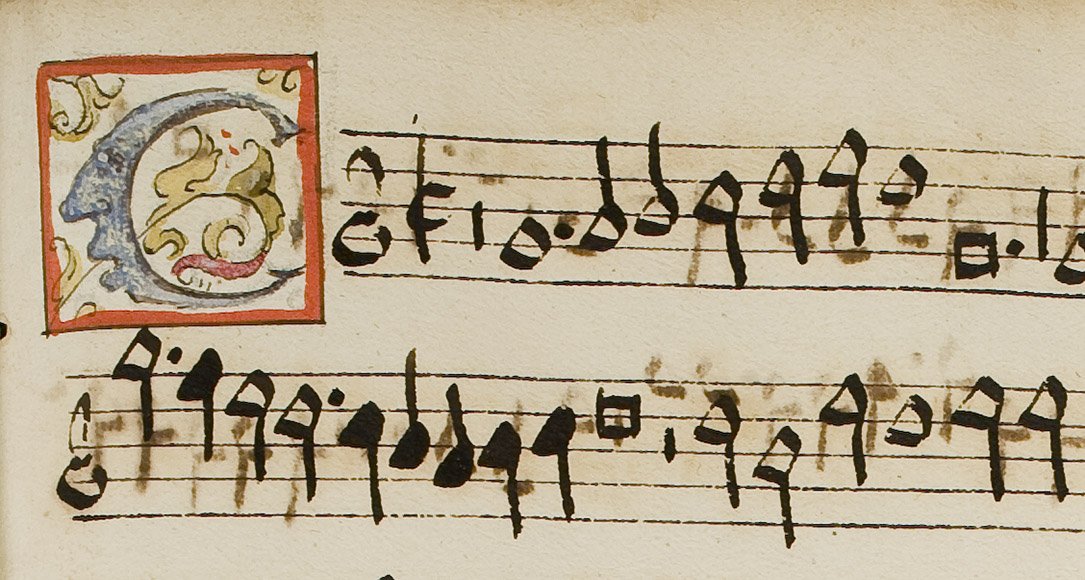
Additions
Probably Andrés de Alamillos, musician in Palencia, took the manuscript with him to Léon. In 1607 he arrived in Lerma. There, together with another group of musicians and singers, he was employed to accompany the services in the new San Pedro collegiate church of Lerma and in the ducal chapel. The whole affair was funded by the duke of Lerma who was the actual ruler in Spain under Philip II, until he fell into disgrace in 1618. In this period, probably all kinds of pieces were added to the Codex Lerma on the blank pages which remained among the compositions for four and five voices and for five and six voices. Seven instrumental songs, all anonymous and not further known, were added to the blank pages at the back.
Troublemakers
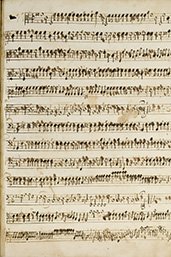
It is clear that the Codex Lerma is a manuscript for everyday use, and together with the unknown compositions, this feature makes the manuscript so unique. Normally these kinds of manuscripts, after having proven their use, were thrown away. This was certainly the case with tattered, simple manuscripts, such as the Codex Lerma, which only contains a limited number of simply adorned initials. Every so often there are notes in the margin which tell us something about the compilers and users of the manuscript. For instance on the folios 158v and 159r is written: Condenados a culpa y a pena por ser enredadores ‘Convicted to guilt and pain by being troublemakers’. The musicians who used the Codex Lerma were obviously no saints.
All in all the Codex Lerma is a unique witness to what kind of music was performed in the collegiate church of Lerma to which the duke of Lerma, at that time one of the most powerful men in the world, must have been a frequent listener.
With thanks to Enrique López-Cortón.

